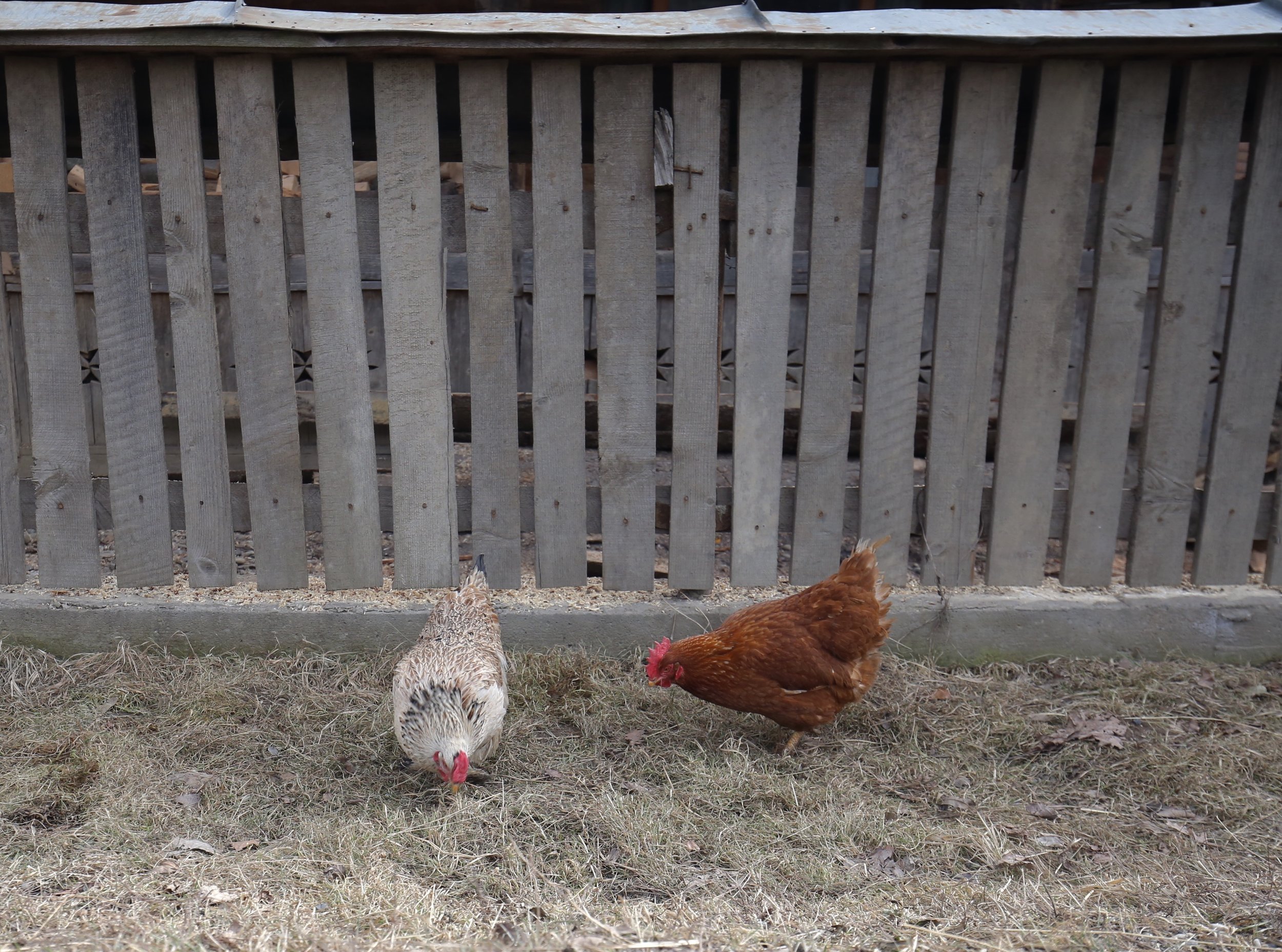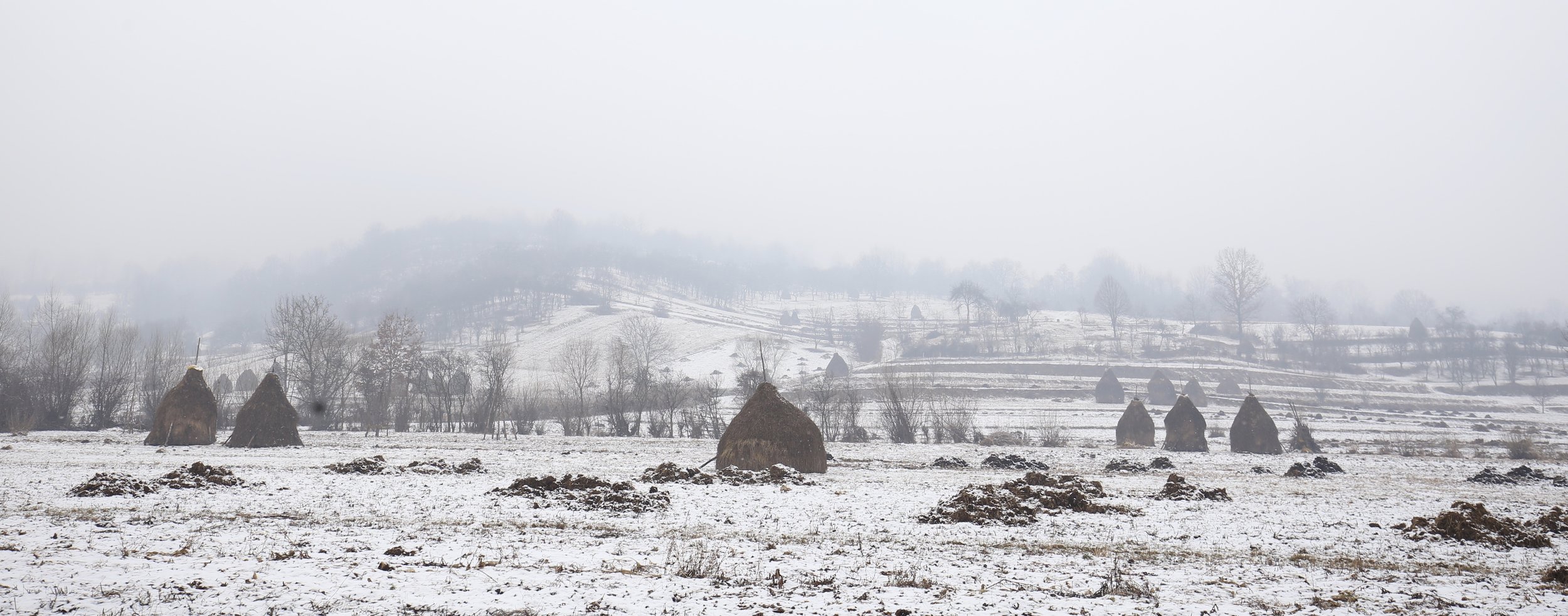ZOE'S DIARY:
ROMANIA
Feb. 2016
The land is characterised by rolling hills, sectioned off by high, peaked mountains. The hill parts were all golden brown, the wheat having been cut last autumn, and all the fields were speckled with giant haystacks formed in the traditional manner: with a wooden peg at the centre, the hay fanning out and downwards from the middle so that the top is conical, making the stacks appear like small huts on a misty morning. Every village we drove through was unbelievably charming. A typical village would consist of fifty or so houses, painted in bright colours, with chickens roaming freely near the front entrance and at the back end there would be a section with a vegetable garden, a couple haystacks and sometimes a donkey.
There are very few roads in Romania, but what roads there are are quite lively! It was common to come round a corner and see horses pulling carts, as so many of the locals still use this as their primary mode of transport. Sometimes the hay in the carts was stacked so high, it created an enormous mound... and sat there, right on top, leaning on his elbow and smoking, would be the cart driver. I remember quite vividly a scene in which a cart passed by us up a hill - the young man driving it was standing up and holding the reigns, the cart was positively flying, the horse was at full gallop, and the boy's face was so full of joy it made me smile to see it.
All along the roadside there are creeping vines, grass tufts and bushes that promised to flower come spring. Romania, unlike so many western countries, does not have the money to spray its streets with pesticides, and a visitor may feel they are traveling through the most fertile of lands as a consequence - in all places, things are growing and sprouting quite beautifully.
As we drove along, I saw so many things that caught my attention:
a woman washing her clothes in a fountain,
another pulling water from a well,
some carpets drying in the sun,
men riding rickety bicycles while holding small dogs,
an old man sitting in a beach chair at the side of the road watching the world go by,
a gypsy palace bedecked in gold and announced with lion statues...
I really felt so much love for this place, and I hope one day to return in summer.













































































